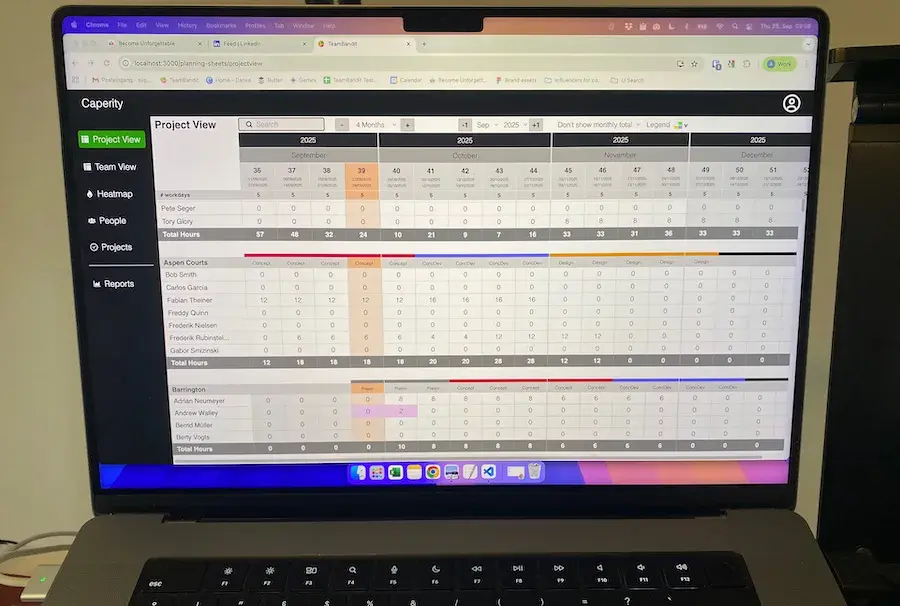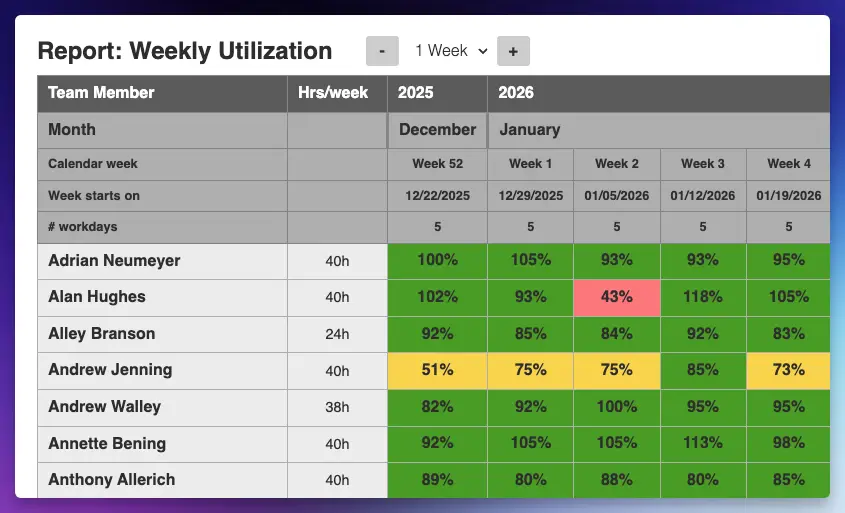So, you’ve tried everything?
Friendly reminders, motivational speech, clear pointers — but somehow the situation is not improving. Either sub-optimal conditions are obstructing your project. Or someone from your team isn’t delivering in the expected quality.
This may be the right time to escalate.
But … be careful! Escalations are a really nasty thing. Let me help you with your decision and show you how escalations are handled in a professional way. Without causing a fire.
What is escalation, really?
Escalation means you bypass your direct contact by reaching out to their management in order to direct attention to a pressing issue. It’s a way of saying: “Hey, we got a problem here that your team is responsible for. You’re the boss, so please do something about it so that the project can continue!”.
The goal is not to blame people, but to get an issue solved.
- A subcontractor is having trouble delivering the product or completing work.
- A team member has failed several times to turn in work within the agreed deadline. Despite several reminders, nothing has happened.
- A stakeholder is deliberately sabotaging or blocking your project.
- Resources in your project are being reassigned to other projects (happens often!)
- Despite several discussions, a team member is not providing work in there expected quality, either due to lack of experience or lack of motivation.
These are just examples. There are many other reasons that justify escalation, include bullying, unresponsive team members or failure to get buy-in.
Should you escalate at all?
Escalations consume a lot of energy and they can create a lot of tension between you and your stakeholders. That is why you should be very careful with escalations and only “take out the gun” if you really think it is justified.
I have created a checklist to help you assess whether you should escalate or not.
Whenever you are enraged because you’re not getting the support you need, it’s a good time to go through the list because you shouldn’t react out of your immediate emotions but rather think through the next steps (I know it’s not easy)
Escalation checklist
Escalate only if any of the following statements match your situation:
- The issue you are planning to escalate is likely going to cause a delay of the project or an overrun of budget OR
- The issue is causing significant extra work on your side or on the side of your team members
- You have already tried different strategies to fix the issue or contain the risk but to no avail
- You have communicated the issue to the responsible team (or team member)
- You have tried to find a common solution with the other party involved
So, now you have an idea about whether you should escalate.
But what’s the right time to fire?
[the_ad id=”6859″]
The right timing for an escalation
This is a bit like calling the ambulance.
If you call 911 too early where the patient only has light symptoms, his situation may improve and you may have called the ambulance for no reason.
On the other hand, if you play for time and wait too long, you know what’s going to happen. The patient may die because any help will come too late.
As a rule of thumb, I would say this:
Escalate as late as possible, but still early enough so that the issue can be resolved and your project can be brought back on track.
Are you able to articulate the issue?
No matter who you are escalating to, you have to be able to articulate the issue in a clear and unambiguous fashion.
We tend to downplay problems or sugarcoat issues because we don’t want to hurt other people’s feelings. And we don’t want to become the crybaby of the company.
The challenge with escalations is you have to be both clear and diplomatic.
Use my framework:
- What exactly is the problem?
- What are the consequences of the problem?
You need to have evidence
Just complaining about an issue isn’t enough. At least it won’t be as effective as when you’re able to show proof that things aren’t going the way they should.
I’m not a fan of documenting every word in every discussion I had. But if I feel a situation is getting worse (e.g. work is not done, or deadlines are regularly missed) I start to meticulously document the entire communication (email, phone call).
For example, if deadlines are regularly missed by a team member, I will track actual dates of completion vs. planned completion in my project action tracker.
This way I have something to show, especially useful for escalation meetings.
Who to escalate to?
The next step is to figure out who to escalate to. Usually it’s the management that oversees the team, person or entity that’s causing the issue or blocking the project.
You can also escalate through your own management. You can go to your boss are your boss’s boss and get the issue escalated from there to the other side.
Generally, I would recommend you talk first to the other party and see if you can find a solution together.
[the_ad id=”6859″]
What an escalation process looks like
Let’s look at how escalation process usually works in practice.
Example:
A subcontractor has constantly been failing to deliver an essential piece for the project. Despite several discussions with a subcontractor this situation has not improved, and you feel like that’s nothing more you can do.
First escalation: Escalate to counter party’s management
The first step is to raise the issue to the management responsible of the party you’re dealing with. In our example that’s is the subcontractor you are working with.
You can do this escalation yourself and send an email to new management of the subcontractor.
Alternatively, you can go to your boss or even the director and have the escalation start from that level. This would give the escalation more impact because it’s not coming from an ordinary staff member but from a manager.
Here’s an example of an escalation email:
To: Jonathan Reese, Group Leader Professional Services CEBEX LLC.
Dear Mr Reese,
My name is Rob Helzer and I am the project manager from Global Corp. And we are working with your development team to implement in you X.
I’d like to bring to your attention that an issue we have been facing in getting the product set up. So far the BAU team has not been able to meet the quality and technically criteria for the product, into situation is putting a project at risk.
I for the delay of the delivery Will lead to a postponement of the go live and additional cost off at least $12,000 because we have to extend the contract for our existing System.
I kind a kindly ask you to give your attention to this issue and make sure that your team can provide the solution in the expected quality. If you have any questions don’t hesitate to contact me.
Thank you for your support,
Rob Helzer
The email is going to Mr. Jonathan Reese, the direct Manager of the subcontracting team.
Look at the email and see how I have structure and worded it.
- Structure: friendly introduction, description of the problem, description of the impact of the problem, request, friendly closing
- Tone: clear, friendly and not in an accusatory tone
Next you have to give that person some time to look at the issue and come back with a response. Depending on the urgency you usually wait 2-3 days but it can be less if the situation is grave.
Tuning up: Escalate to next higher level
If the situation does not improve or you don’t hear back after your initial escalation, do you have to escalate to the next higher management level. This is usually going to the group leader or director level.
You can basically use the same email as above but you might want to mention that you already involved the direct manager but that didn’t help.
For greater impact and awareness, the escalation should now come from your management. The big boys usually prefer to engage with people on their level. An email from you to the CFO for example may not be taken seriously, because you’re just a regular staff member.
Going to the max: Escalating to the highest level
Depending on the gravity of the problem, escalating to the highest level – usually C-level executive or even the CEO – can be justified.
If talking to the lower level entities didn’t help, then an escalation to that level will usually set in to force the actions to solve the problem.

We once escalated to the vendor’s CEO when our software project got into trouble because the software continuously failed to work on our servers.
It triggered a tsunami of actions – in the positive sense. An executive from the vendor was assigned to coordinate what are to solve the issue. We had a weekly status call with him, and he would kick the butt of his team members. Now things were moving forward quickly!
My escalation tips
Always stay friendly
Keep in mind that the purpose of going into an escalation is to solve an issue and not to make it worse by blaming people for their failures. If you don’t hit the right tone and if your corner people by being too aggressive, you may not get it anything out of the escalation. What rather will happen is that people withdraw and refuse to cooperate with you. That’s something you want to avoid.
Don’t get personal
Let me make a distinction here. Some escalations will have a personal touch because the issue is caused by someone specifically who is this deliberately causing trouble or refusing to do work. This is where things get personal. In most cases however, project management issues are caused by bad circumstances: a typical example would be a team member who’s got too much to do and is unable to do the work for you. This is not where you should get personal because it’s not the person’s fault that she can’t deliver. It’s the responsibility of their manager to help in the situation.
Don’t escalate too often
Unless you intend to become the most hated colleague in the organization, escalate only when the situation is really dire and if you think an escalation can trigger a change. Escalating rarely also gives your escalations more weight because it’s not something people anticipate from you.
Escalations should be part of your toolbox
Yeah, I know they are not fun to go through. But escalations are a necessary and useful tool for directing attention on an issue. That’s why you should understand the process and the pitfalls.
If you feel uncomfortable with getting into an escalation, just think what would be the consequences of either option – starting an escalation or remaining silent.
If you escalate, you’re going to have some difficult meetings. You have to prove what’s not working and that you’ve tried several things. This is hard work, but the upside is there will be enough attention given to the issue and management can step in with help.
If you remain silent and do nothing the issue will just grow bigger, and few days or weeks from now, your project might end as a train wreck and people will be pointing at your direction. That’s probably not what you want.
I wish you a lot of success!
If you have any questions, just let me know.
Do you have a question?
Have a question about this article? Need some assistance with this topic (or anything else)? Send it in and I’ll get back to you soon.
Author
-
Hi, I’m Adrian, a Senior Project Manager and the Creator of Tactical Project Manager, where I teach a pragmatic approach to project management. Led large-scale IT and business projects for over 10 years. My goal is to enable you to lead any project with confidence.
View all posts


